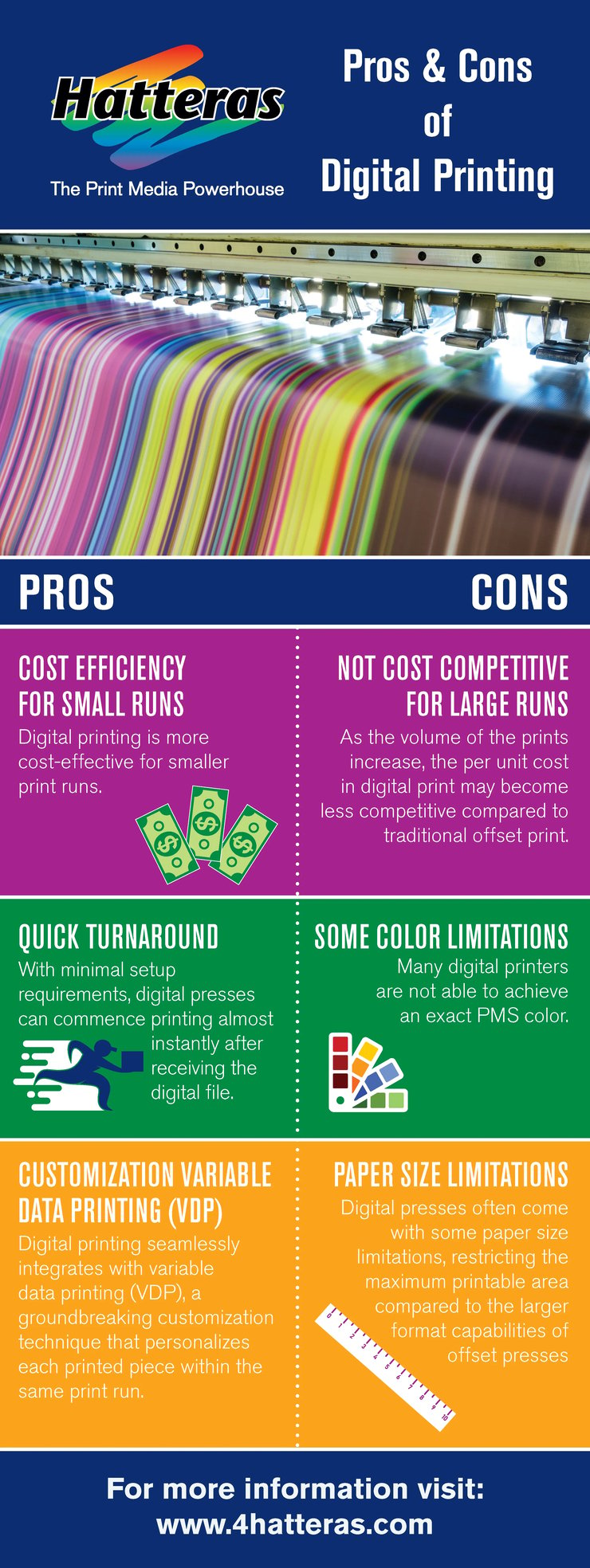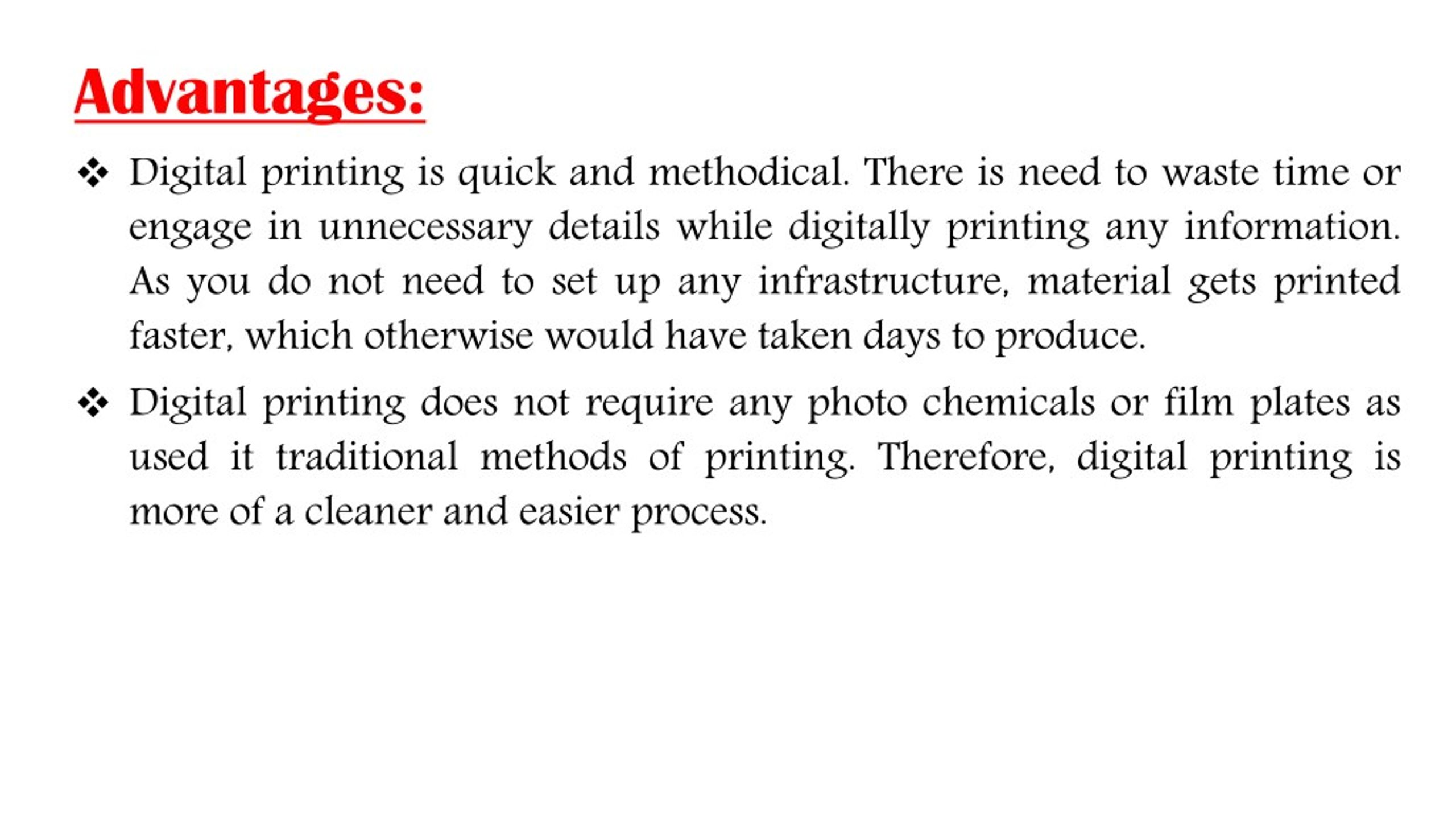Digital Printing Fundamentals Explained
Digital Printing Fundamentals Explained
Blog Article
All about Digital Printing
Table of ContentsOur Digital Printing StatementsSome Known Incorrect Statements About Digital Printing The 20-Second Trick For Digital PrintingThe Definitive Guide to Digital PrintingDigital Printing for BeginnersMore About Digital Printing
Variable data printing, such as straight mail with customized codes and addresses, is ideally matched for digital printing. Digital fast printing just needs 4 steps of layout, evaluation, printing and binding to obtain whatever done. Digital fast printing has an unparalleled benefit: print on demand.According to PMMI, digital printing enables brands and suppliers to respond promptly to customer needs while enhancing the supply chain, reducing warehousing cost and waste, and appreciating faster time to market. That all audios excellent, however just how does this innovation do all that? The major differentiator of these modern technologies is that there are no set-up costs and no plates with electronic printing.
Indicators on Digital Printing You Should Know
This results in quicker turnaround time and decreases price when utilizing electronic printing.
Digital printing is extremely adaptable, so it's very easy to make changes to the plan style promptly. It all goes back to the plates.
A lot more inventory can indicate more waste in the future. With conventional printing techniques, short-run printing is just not possible. Because a great layout can make or break your item, digital printing consistently creates top quality, clear and vivid graphics each time. Digital printing on adaptable pouches adds the brilliant, dynamic, and precise graphics that virtually beckon consumers to connect and touch them.
Digital printing is the process of printing digital-based images directly onto a variety of media substratums. There is no need for a printing plate, unlike with countered printing. Digital documents such as PDFs or desktop publishing documents can be sent out straight to the electronic printing press to print theoretically, image paper, canvas, fabric, synthetics, cardstock and various other substratums.
Digital Printing Fundamentals Explained
According to PMMI, digital printing allows brand names and manufacturers to react rapidly to client demands while boosting the supply chain, decreasing warehousing cost and waste, and enjoying faster time to market. That all noises excellent, yet how does this innovation do all that? The significant differentiator of these technologies is that there are no set up costs and no plates with digital printing.
According to Wikipedia, the best difference in between digital printing and standard approaches such as lithography, flexography, gravure, or letterpress is that there is no demand to change printing plates in electronic printing, whereas in these analog printing approaches the plates are repeatedly changed. This causes quicker turn-around time and reduces price when using electronic printing.

Excitement About Digital Printing
More stock can suggest more waste later on. With standard printing techniques, short-run printing is just not feasible. Because a wonderful layout can make or damage your item, digital printing continually creates top quality, clear and colorful graphics each time. Digital printing on flexible bags adds the brilliant, dynamic, and specific graphics that almost bid consumers to get to out and touch them.

According to PMMI, electronic printing enables brands and producers to respond rapidly to customer needs while improving the supply chain, decreasing warehousing price and waste, and taking pleasure in faster time to market. That all sounds wonderful, however just how does this modern technology do all that? The significant differentiator of these innovations is that there are no set-up costs and no plates with electronic printing.
Digital Printing for Dummies
This results in quicker turnaround time and lowers price when using electronic printing.
Speedy manufacturing means getting your item to market faster. It additionally means it's much easier and faster to make changes later on, when you change a recipe, include a SKU, or develop seasonal product packaging. Digital printing this article is very flexible, so it's easy to make modifications to the package design promptly. All of it returns to the plates.

Excitement About Digital Printing
Digital printing is the process of printing digital-based photos directly onto a variety of media substratums. There is no need for a printing plate, unlike with offset printing. Digital documents such as PDFs or desktop posting documents can be sent straight to the digital printing press to publish on paper, image paper, canvas, material, synthetics, cardstock and various other substrates.
Report this page